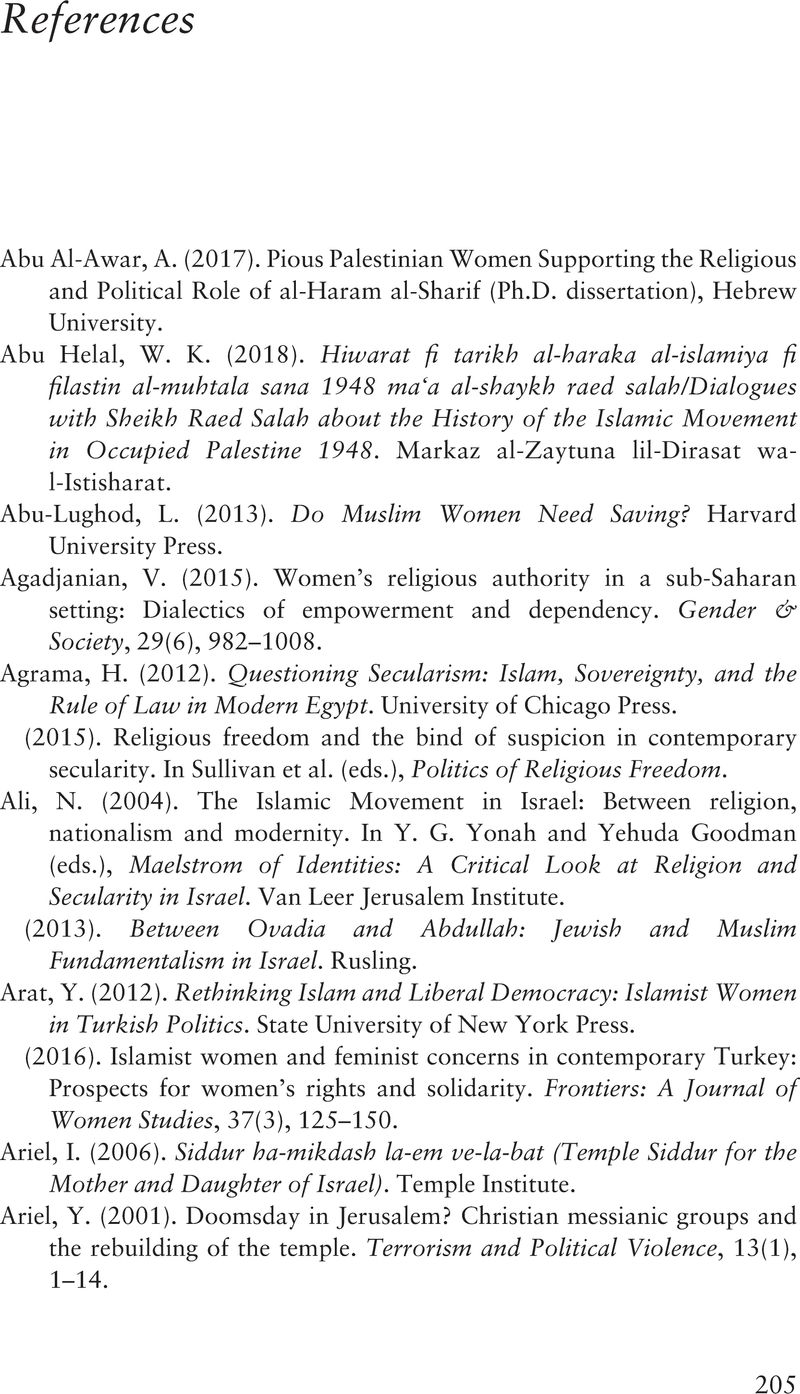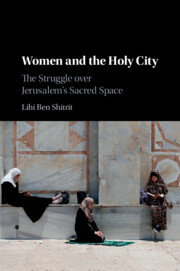Book contents
- Women and the Holy City
- Women and the Holy City
- Copyright page
- Contents
- Figures
- Acknowledgments
- Note on Language
- 1 Introduction: A Tourist at Home
- 2 Women for the Temple and the (In)Divisibility of Temple Mount
- 3 Women of the Wall
- 4 Al-Aqsa will not be Divided!
- 5 Epilogue: The Question of Religious Freedom
- Notes
- References
- Index
- References
References
Published online by Cambridge University Press: 09 October 2020
- Women and the Holy City
- Women and the Holy City
- Copyright page
- Contents
- Figures
- Acknowledgments
- Note on Language
- 1 Introduction: A Tourist at Home
- 2 Women for the Temple and the (In)Divisibility of Temple Mount
- 3 Women of the Wall
- 4 Al-Aqsa will not be Divided!
- 5 Epilogue: The Question of Religious Freedom
- Notes
- References
- Index
- References
Summary

- Type
- Chapter
- Information
- Women and the Holy CityThe Struggle over Jerusalem's Sacred Space, pp. 205 - 216Publisher: Cambridge University PressPrint publication year: 2020



